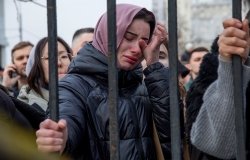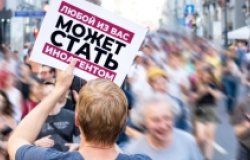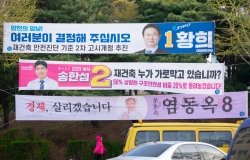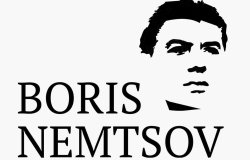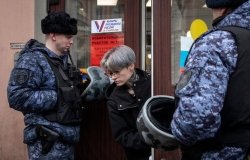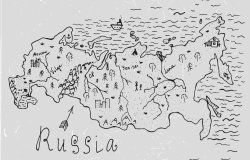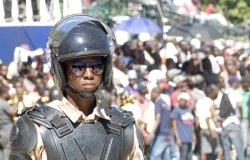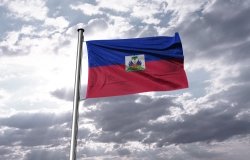Understanding the Turmoil in Kazakhstan | Kennan Institute Expert Analysis
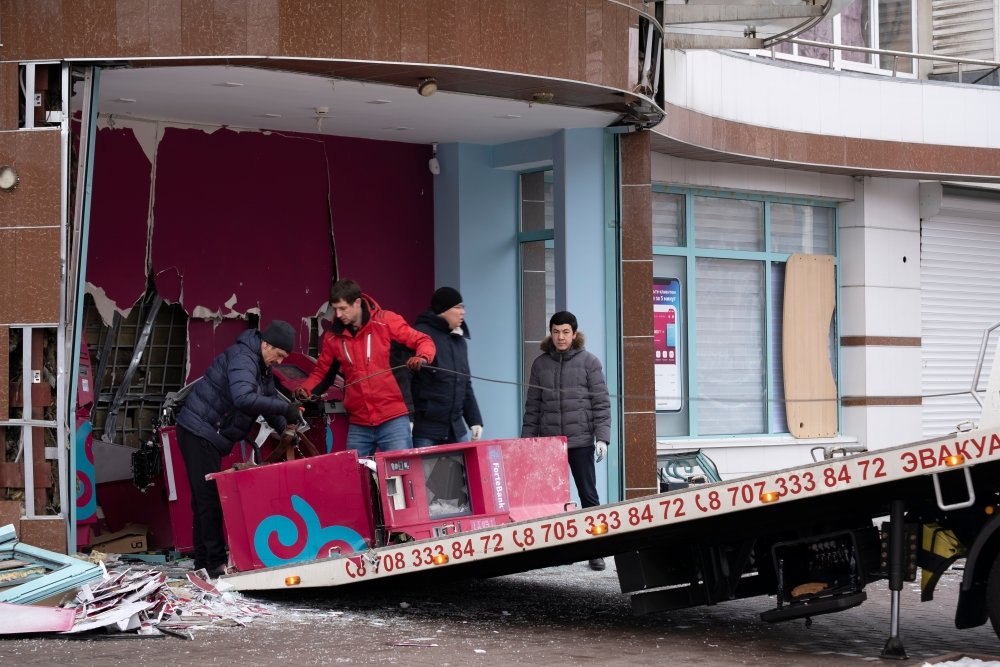
PromKaz/Shutterstock.com
In less than a week, Kazakhstan has experienced a dramatic shift in its political leadership and society. Sparked by protests on the price of gas in the country, the government has cracked down on civilian protesters, cut off internet for much of the country, and called in support from the Russian government to handle opposition. The Kennan Institute recently asked several of our experts to weigh in on this developing story.
Explore the Analysis from Our Experts
Mehmet Volkan Kasikci, Postdoctoral Researcher, Institute for Advanced Soviet and Post-Soviet Studies, Higher School of Economics
Although Kazakhstan’s president Kassym-Jomart Tokayev has been purging some members of the Nazarbayev clan, we do not know yet whether any fundamental change in the structure of the government will ensue. New alliances will be established, and the old regime can survive the chaos with a new face. Tokayev has largely lost his legitimacy by inviting foreign troops into Kazakhstan. Responding to people’s demands is the only way he can regain his legitimacy. Therefore, purging the Nazarbayev elite is not only a power struggle but also a matter of acquiring legitimacy for him. In the worst-case scenario, he will have to protect his power by becoming more and more oppressive because of his government’s lack of credibility. Yet he can turn the tide to some extent if the Russian troops really leave soon, and if he maintains order and brings significant structural reforms to satisfy some of the protesters’ demands, if not all.
In any case, politicization of the society to an unprecedented extent is inevitable. In the worst-case scenario, this would be expected to create waves of contentious politics in which different segments of society resist state power more frequently. In a more optimistic scenario, politicization will lead to new political movements and civil society groups flourishing in the country. Kazakh society was to a large extent depoliticized. I do not mean there was never unrest and resistance, but there were no political movements or ideological positions and rhetoric that could influence larger segments of the society. A pro-Western liberal group has emerged in recent years, but its influence is highly exaggerated. Kazakh nationalism was frequently the only available political discourse in the country, and ordinary people’s grievances could easily be hijacked by nationalist slogans.
Decades of Soviet rule did not create any tradition of left-wing politics in Kazakhstan, although the Soviet legacy is evident in people’s expectations of a welfare state. Many scholars working on contemporary issues still assume that the Soviet regime was totalitarian in the sense that it completely controlled the minds of the people; and that Marxist ideas were omnipotent and omnipresent. In contrast, after World War II, being a Soviet patriot rarely required embracing Marxist ideology. The available topoi for the average person in Central Asia were the cult of the leader, Soviet citizenship and patriotism, the struggle against the outside world, the friendship of peoples, and national discourses. After the collapse of the Soviet Union, these topoi were whittled down to the cult of the leader, blind patriotism, and a nationalist discourse. Regardless of whether fundamental changes will take place or not, we are definitely witnessing the end of the Nazarbayev cult, which is itself important. A new cult leader is unlikely to emerge in the short run.
The masses have proved that they are ready for political change and have the will to seek power. In particular, workers’ solidarity and collective will in the Western cities of the country are remarkable. What they now need is to create a new political and ideological discourse to address these grievances. Liberal intellectuals offer no solution for the country’s deep problems other than opposing authoritarianism. Although some tend to frame the corrupt regime as the natural outcome of the Soviet legacy, this regime and the new elite are the products of both an older Soviet bureaucracy and the new opportunities and global ties provided by Western capitalists. Against this background, the people’s determination may be able to drive real change if the social and economic grievances of the masses can be translated into a new political discourse.
Edward Lemon, Global Fellow, Wilson Center; President, Oxus Society for Central Asian Affairs; Research Assistant Professor, The Bush School of Government and Public Service, Texas A&M University
How long can Russia stay in Kazakhstan?
The Collective Security Treaty Organization (CSTO) began withdrawing its Collective Peacekeeping Forces, numbering around 2,500 personnel, from Russia, Armenia, Belarus, Kyrgyzstan, and Tajikistan on January 13. The short deployment makes sense for Russia, which dominates the CSTO, as it will dispel any notion of an occupation like that in Ukraine or Georgia. The small scale of the deployment, and the choice to send peacekeepers rather than using the CSTO’s other two collective forces, the Collective Operative Reaction Forces and the Collective Rapid Deployment Forces, was a further signal to the Kazakh public, which up to this point has been largely positive toward Russia, that their northern neighbor’s intervention is temporary. In short, a brief deployment suits Russia’s interests.
For Russia, the deployment has been a success. First, it signals that the much-criticized CSTO can be effective, even if it is unabashedly being used to prop up an authoritarian regime. Previous calls for the CSTO to intervene during the ethnic violence in Kyrgyzstan in 2010 or in the case of conflict between Azerbaijan and member state Armenia in 2020 were met with inaction. This caused many to question the organization’s future. But now the organization has signaled that it can respond quickly and decisively to quell a crisis in a member state. Second, Russia has solidified its position as an external security guarantor in Central Asia, a role that some had questioned as China made inroads as a security provider in the region. Third, the intervention, which has focused on securing key assets such as airports and the Baikonur cosmodrome, has not brought CSTO forces into conflict with the local population, a scenario that could have sparked a popular backlash. Finally, Tokayev now owes his political survival, in part, to Putin. The intervention, reminiscent of Saudi Arabia’s intervention in Bahrain to quell an antigovernment uprising in 2011, is a textbook example of what Roy Allison terms “protective integration.” Regional organizations in Eurasia, he argues, are less interested in meaningful regional integration or joint problem solving and more interested in bolstering regime security, stability, and legitimacy. The CSTO intervention will not come for free. We can expect Tokayev’s new government to have to make various as yet unknown concessions to Russia and Kazakhstan to remain firmly, though not exclusively, in Russia’s orbit in the aftermath of the recent unprecedented violence in the country.
Ted Lyng, Senior Diplomatic Fellow, Wilson Center-State Department
Wilson Fellow Ted Lyng is a senior Foreign Service officer who served as deputy chief of mission in Kazakhstan in 2018–2021. The views in the below comment represent his own personal views and do not necessarily represent the views of the State Department or the U.S. government.
The suddenness and velocity of the recent demonstrations in Kazakhstan surprised even seasoned observers. With the violence over, protest suppressed for now, and Collective Security Treaty Organization (CSTO) troops poised to depart, where do we stand?
First, recent events have not changed the fundamental calculus that underpins Kazakhstan’s multivector diplomacy. Kazakhstan has long regarded itself as a strategic ally of Russia, and it was predictable that President Kassym-Jomart Tokayev would turn to Russia and the CSTO in a crisis. Similarly, Tokayev, who speaks Mandarin and has diplomatic experience in China, quickly called President Xi Jinping to reassure the Chinese government that its extensive economic interests in Kazakhstan would be safe.
The Western vector of Kazakhstan’s diplomacy was more complicated. U.S. calls for Kazakhstan to rescind a shoot-to-kill order upset the Kazakhstani government, which maintains publicly that it was fighting a foreign terrorist force. Similarly, calls for dialogue over protestors’ concerns were not well received. And Secretary of State Antony Blinken’s Twitter jibe that CSTO troops might never leave caused consternation in both the Russian and Kazakhstani governments. These irritants reflect the complications inherent in Kazakhstan’s relations with the United States and other countries that make concern for human rights and democracy a part of their diplomacy. However, despite some short-term heartburn, there is no evidence Kazakhstan has rethought its position of encouraging Western investment and engagement.
Second, by removing former president Nursultan Nazarbayev as head of Kazakhstan’s Security Council, firing Nazarbayev’s nephew from his position in the State Security Service, and taking action against some assets of the Nazarbayev family, Tokayev has signaled that he intends to exercise full power and is willing to take on the Nazarbayev family’s interests, long considered a political red line. Similarly, by firing and arresting intelligence chief Karim Masimov, Tokayev has shown he has the stomach to use whatever means necessary to quash a rival in the inter-elite conflict anticipated after Nazarbayev’s full removal from the political scene.
Third, whether Tokayev will make good on his promise of fundamental reforms in a “new Kazakhstan” is uncertain. Tokayev came to office promising reform. Some sincere Kazakhstani civil society figures urged Western observers to give Tokayev a chance. However, the potential of the supposed new “listening state” or the “National Council of Public Trust” was never realized. As former U.S. ambassador to Kazakhstan William Courtney has noted publicly, “Tokayev’s [recent] remarks offer no promise of a more open political process with greater freedom of speech and assembly in Kazakhstan. Without this check on official power, promises of reform or better governance may have little credibility.” That said, we cannot rule out that a Tokayev newly emboldened to take on vested political interests like the Nazarbayev family may not pursue real reform.
The United States Strategy for Central Asia 2019–2025 notes the important U.S. interest in a “stable and secure” Central Asia “that is deepening engagement with the United States” and calls on Central Asian countries to “implement reforms that open the region to international investment and strengthen democratic institutions.” In accord with these principles, the United States should work to encourage the Kazakhstani government to keep its promises of democratic reform. We will do so most effectively by engaging vigorously with the entire region, especially in the C5+1 platform. Kazakhstan’s strategic alliance with Russia is not going away, and we must be realistic, but a patient, measured diplomacy can effectively encourage better respect for democracy and human rights, as well as help balance the influence of Russia and China in the region.
Amb. (ret.) John O'Keefe, Global Fellow, Wilson Center
Recent events in Kazakhstan highlight a trend that has involved Russian response, and sometimes intervention. Russia's interest in creating client states of the former Soviet republics has gotten more traction since the Putin presidency. The primary objective has centered on contiguous states: Belarus, Ukraine, Georgia, Azerbaijan, and Kazakhstan. When Georgia and then Ukraine began slipping away from Russian influence, both states saw some of their territory occupied by hostile Russia-backed groups, or, as with Crimea, annexed outright. Azerbaijan has courted Turkey to blunt Russian pressure but nevertheless has followed Russia's lead in many areas, providing no overt excuse for an intervention.
Belarus, with its integration into the Russian Federation on borders, customs, and trade, was a mostly reliable partner, with President Aleksandr Lukashenko occasionally baiting the Russian bear. But the revolt this past year meant asking for, and needing, Russian help and support in quelling that uprising. Lukashenko is now in thrall to his neighbor.
Countries not contiguous to Russia have some degree of flexibility in dealing with Moscow. Uzbekistan jealously guards its sovereignty, Turkmenistan stakes out aggressive neutrality as its core foreign policy principle, Tajikistan has Russian troops (but also Chinese ones), and Kyrgyzstan with its multiple uprisings also has a Russian military base and an increasingly pro-Kremlin leadership.
Which brings us to Kazakhstan. The Collective Security Treaty Organization (CTSO) troops, mostly Russian, seemed more symbolic than brought in for action. They did guard the Almaty airport and other strategic sites, but the Kazakh forces had adequate resources to accomplish that mission. Was it to signal to the those who had taken to the streets with legitimate grievances over income disparity and corruption that the jig was up? Was it to help ease out the competing elite loyal to Nursultan Nazerbayev and signal that President Tokayev had the backing of the Kremlin kingmaker? Certainly the dismissal of Karim Masimov, a Nazerbayev loyalist, as security chief and his subsequent arrest on suspicion of treason looked like an internal power play.
The question is, what price this intervention? Major international oil companies have invested billions, and their operations provide wealth and income for the country. The Chinese have not only a long border with Kazakhstan but considerable investment in energy, and in transportation to move Chinese goods by rail to markets west of Kazakhstan. Those players give some leverage to Tokayev. But there is the 4,000-kilometer border with Russia, and the sizable Russian population bordering Siberia. Expect a much less independent foreign policy than under Nazarbayev. Expect Russian pressure to gain a significant stake in the oil and gas market if not in production. Expect greater pressure for support of the CSTO and the Shanghai Cooperation Council. While Tokayev won’t be a puppet, Putin will be pulling some strings.
For other countries, Russia’s policy will seek to exploit any weakness in what the Kremlin considers its sphere of influence. Civil unrest is a friend. Those in power don’t want to lose it, and Russia can be a reliable partner in putting down troublesome groups for whom corruption, mismanagement of the economy, and various types of suppression are untenable. Clearly, the Russian role in suppressing a change in leadership in Belarus and Kazakhstan sends a message to other countries, such as Azerbaijan. But Kazakhstan, with its wealth, its common border, and its strategic location next to China, is a country that the Kremlin would like solidly in the fold.
Joshua Shifrinson, Wilson Fellow; Assistant Professor of International Relations, Pardee School of Global Studies, Boston University
The unprecedented protests in Kazakhstan, followed swiftly by Russia’s intervention to bolster the ruling regime, underlined an enduring reality: powerful states seek security on their own terms in their near abroad. Structural economic problems and political discontent drove the protests, and can only be addressed with fundamental reforms or sustained repression. Confronted with the need to choose between change and backing the status quo, Moscow calculated that it could not tolerate unrest and the accompanying strategic uncertainty on its southern flank. That failure to sustain the ruling regime could spill over into Russian politics and, in any case, invite foreign intervention only made the problem starker. Economic considerations—Moscow profits by purchasing and reselling at markup Kazakh oil and gas—and the presence of a sizable ethnic Russian population likely also made the situation salient and the choice to aid repression exceedingly likely. Russia, in short, had much to lose and nearly nothing to gain by letting the Tokayev-Nazarbayev regime collapse.
Having helped to stabilize the status quo, Russia faces an uncertain future. The situation remains bleak. Tokayev may have cemented his hold on power, but how long he can remain in charge is in doubt. The structural problems that fed the most recent crisis remains. Tokayev himself is not a young man, and leadership succession in Kazakhstan (let alone the rest of Central Asia) remains a problem. And if, as seems likely, Russia is going to have its hands full in Europe even if the Ukraine crisis winds down, it will have to proceed carefully in addressing future Kazakh problems given an international alignment potentially interested in further isolating and penalizing Moscow. A replay of the Kazakh unrest under even worse conditions, in other words, is not impossible.
The geopolitical risks in another Kazakhstan scenario, meanwhile, are only likely to grow. Perversely, Russia was helped in the most recent episode by the speed with which problems developed. Two issues are especially salient. First, with Kazakhstan’s problems emerging within just a few days, the prospect of outside actors getting involved was limited. These conditions may not always appear. To be sure, it is highly unlikely that the United States or European countries would be eager to get involved in light of the distances involved and their own limited interests. However, other actors with a stake in Central Asia might not always be willing to remain on the sidelines. China in particular has a vested interest in Central Asian stability and, although willing to pass the buck to Russia on this go-around, might seek to assert its own prerogatives in a future crisis. Should this happen, however, then Russia’s influence over its near abroad—indeed, over a former part of the Russian and Soviet Empires—would be weakened. With long-term geopolitical trends already running against it, Moscow cannot look favorably upon this prospect.
Second, Kazakhstan’s recent protests were themselves largely spontaneous and disjointed. As such, they were relatively contained and readily put down once reliable security forces (many from Russia) became available. There is no guarantee of similar conditions in the future. Better preparations, a broader or more organized protest movement, or further penetration of Kazakh security forces could all make it more difficult for any party to establish effective political control, a problem reinforced by the vast spaces involved. It is thus entirely possible that a similar situation could get out of hand and the protests become significantly more self-sustaining in the future. Under such circumstances, Russia would have to confront the prospect of turmoil spreading not just throughout Central Asian states but to Russia’s own Central Asian populations; of note, this risk is arguably more acute for Beijing, owing to concerns with China’s Uighur population (potentially providing an impetus for Chinese action). Long-term unrest is very much a possibility.
In sum, Russia looks to have shored up its near-term interests in Kazakhstan but reinforced a ticking time bomb. Repression aside, Kazakhstan’s structural economic and political problems remain. At the same time, a reform program that might let the air out of the Kazakh balloon is uncertain to succeed; in any case, the fraught legacy of reform (from Moscow’s perspective) in the former Soviet space likely diminishes this option’s appeal. Moscow is thus caught in an unenviable dilemma: it has interests in Kazakhstan that it dare not ignore, but a finite—and potentially limited—suite of tools to service them. The situation augurs only problems for Russian concerns in the years ahead. On the Central Asian steppe, it’s one step forward and two steps back for Moscow.
Anara Tabyshalieva, Associate Professor, Marshall University
How long can Russia stay in Kazakhstan?
A deeply rooted idea endorsed by Russia’s political leaders concerning Russia’s role of protection in its near abroad is tied to the Soviet legacy. A unique mission of Russia is to shield the former Soviet republics from threats of color revolutions, religious extremism, and other problems ginned up by external players. In the Kremlin’s view, Russia’s Central Asian neighbors are vulnerable states that lack a tradition of nationhood. According to Vladimir Putin, Nursultan Nazarbayev, former president of Kazakhstan “created a state on the territory where there has never been a single state. Kazakhs have never had their own nationhood. He created it. In this context, he is an exceptional figure in the post-Soviet space." Orientalism of official Russian political statements infuriates Kazakhstani patriots and sparks the rise of nationalism.
Kazakhstan and Russia have a long history of beneficial cooperation. Russian interests in Kazakhstan include access to abundant resources, both raw materials and the Baikonur spaceport. Russian politicians’ frequent public comments on annexing the northern territories of Kazakhstan have motivated national unity actions in that state. In short, Russian planners are interested in restoring control over the former Soviet republics, including Kazakhstan.
Will Tokayev establish a more independent political base, or is he a figurehead of Nazarbayev’s creation?
President Kassym-Jomart Tokayev’s offer to rename Astana, the capital of Kazakhstan, Nur-Sultan was immediately endorsed by the parliament. In this transitional period, President Tokayev plays two roles: as a figurehead in Nazarbayev’s circles and as a leader who must initiate a new political paradigm. The previous ossified model of Nazarbayev impedes the political, economic, and social development of Kazakhstan. If Tokayev fails to meaningfully address institutional challenges, ongoing public distrust and further outbreaks of protests can be expected. Tokayev should seize this window of opportunity to dismantle the legacy of the previous president and promote a new agenda to confront Kazakhstan’s numerous problems.
Is there any role for Nazarbayev going forward? Can he reestablish a certain legitimacy or authority?
Nursultan Nazarbayev governed Kazakhstan from 1989 to 2019, when he resigned. In terms of political longevity, he could be placed between Fidel Castro and Aleksandr Lukashenko. Like Mustafa Kemal, better known as Ataturk ("Father of the Turks"), and Saparmurat Niyazov, or Turkmenbashi (“Head of the Turkmen”), Nazarbayev believed in his charismatic role as a founding father and accepted the title of Elbasy (“Leader of the Nation”) in 2010. Not surprisingly, over the decades, rewarding economic activities have aggregated in the hands of the ruling families. The hidden power struggle over the redistribution of resources among influential groups intensified after Nazarbayev resigned the presidency. It is very unlikely that he could reignite his fading authority.
How successful have Kazakh troops been in taming the revolt?
The Soviet-style suppression of the recent revolt by the Kazakh troops and "peacekeepers" of the Collective Security Treaty Organization (CSTO) could be seen as a pyrrhic victory. Disregarding the lessons of the color revolutions in Georgia, Ukraine, and Kyrgyzstan and the upheavals in Belarus, the Kazakhstan government has failed to address numerous political, economic, and social problems.
Could the uprising and its suppression have ramifications elsewhere in Central Asia?
Although the Central Asian republics face similar political, economic, and social problems, the nature and magnitude of these difficulties differ across the region. Fragile Central Asian republics might not be well equipped to respond effectively to Russia’s drive for expansion and restoring domination in its near abroad. Without regional cooperation, Central Asian countries will not be able to fend off Russia’s and China’s expansionist aims in Eurasia.
The Central Asian states face numerous economic, social, and ecological problems that are complicated by an ongoing social and economic divide and delayed institutional reforms. The unrest in Kazakhstan sends a strong and clear message to the ruling elites in Uzbekistan, Turkmenistan, Tajikistan, and Kyrgyzstan: the police state government model established in those countries after the collapse of the Soviet Union will not be sustainable in the future.
What impact might increasing government misinformation and an internet shutdown in the country have on civil society participation by Kazakhstani citizens?
Government actions to spread misinformation and control access to the internet demonstrate a lack of understanding on the part of the government of ongoing societal development, and the administration’s reluctance to find new formulas for engaging with Kazakhstani citizens. The authorities employ brutal methods to quell real or perceived enemies at the grassroots level. I expect further alienation of the "third sector" of society from government and business in the short term. After the merciless crackdown in Kazakhstan, many civil society activists and citizens are pessimistic but eventually will find new opportunities for further participation and empowerment.
Igor Zevelev, Global Fellow, Wilson Center; Professor, MGIMO University
The most surprising thing about the dramatic events in Kazakhstan this month is that they came as a surprise.
First, we should have known better that all post-Soviet states are still weak and fragile. Political institutions may collapse in practically any country of the region at any given moment. Second, a standard scenario of political upheaval is a combination of social unrest sparked by price hikes, disappointment in the wake of election results, or a local conflict with the police and an attempt to use popular grievances by a disenfranchised part of the elite to achieve political change. This may happen even in a seemingly stable and relatively prosperous country if income gaps, corruption, and lack of economic prospects for the younger generation are perceived as unacceptable. Third, Putin’s Russia is a security provider for many post-Soviet elites. In case of trouble, Moscow sides with the regime and its iron-fisted crackdown on protests. Moscow under Putin has always preferred to deal with authoritarian leaders who enjoy full control over state institutions. If the Kremlin fears one thing, it is how Russian citizens may be affected by mass protests toppling a head of state in a nearby country: this possibility should be kept away from the imaginary of Russian citizens. These three factors make Kazakhstan-2022 an emblematic case in the post-Soviet scene and will shape political transformations in many post-Soviet countries in the years to come; it should not surprise anyone when they start unfolding. The only thing we do not know is what country will follow the path of Kazakhstan next.
Paradoxically, the significance of the events in Kazakhstan lies in how little domestic or international consequence they will have. The protests and intra-elite struggles in Kazakhstan have not revolutionized domestic or international arrangements. For certain members of Kazakhstan's elite, the change cannot be more dramatic, but the system of patronage, corruption, and constant intra-elite struggle will remain, at least for a while. Close cooperation with Russia in all spheres, including security and defense, will continue. Intense cultural, linguistic, and personal ties will cement connections outside national government channels and advance transnational relationships based on the individual strategies of many citizens of Kazakhstan and Russia, with business, employment, and education as driving forces.
There is a lot of talk about competition between Russia, China, and the West in Central Asia and in other parts of the former Soviet Union. But when push comes to shove, Russian paratroopers, even when they remain inside their barracks in Russia, are a factor no political actor in the post-Soviet space can afford to ignore.
About the Authors

Mehmet Volkan Kasikci
Postdoctoral Researcher, Institute for Advanced Soviet and Post-Soviet Studies, Higher School of Economics

Edward Lemon
President, Oxus Society for Central Asian Affairs; Research Assistant Professor, The Bush School of Government and Public Service, Texas A&M University (Washington, D.C. Teaching Site)

Theodore (Ted) Lyng
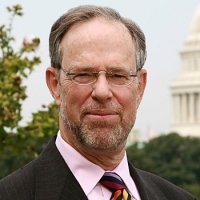
John O'Keefe
U.S. Ambassador (Ret.) to Kyrgyzstan

Joshua Shifrinson
Assistant Professor of International Relations, Pardee School of Global Studies, Boston University
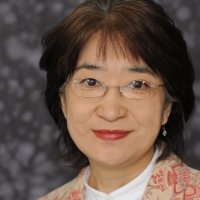
Anara Tabyshalieva
Marshall University

Igor Zevelev
Former Professor at George Marshall European Center for Security Studies; Former Director, MacArthur Foundation, Moscow Office

Kennan Institute
The Kennan Institute is the premier US center for advanced research on Russia and Eurasia and the oldest and largest regional program at the Woodrow Wilson International Center for Scholars. The Kennan Institute is committed to improving American understanding of Russia, Ukraine, Central Asia, the Caucasus, and the surrounding region though research and exchange. Read more
